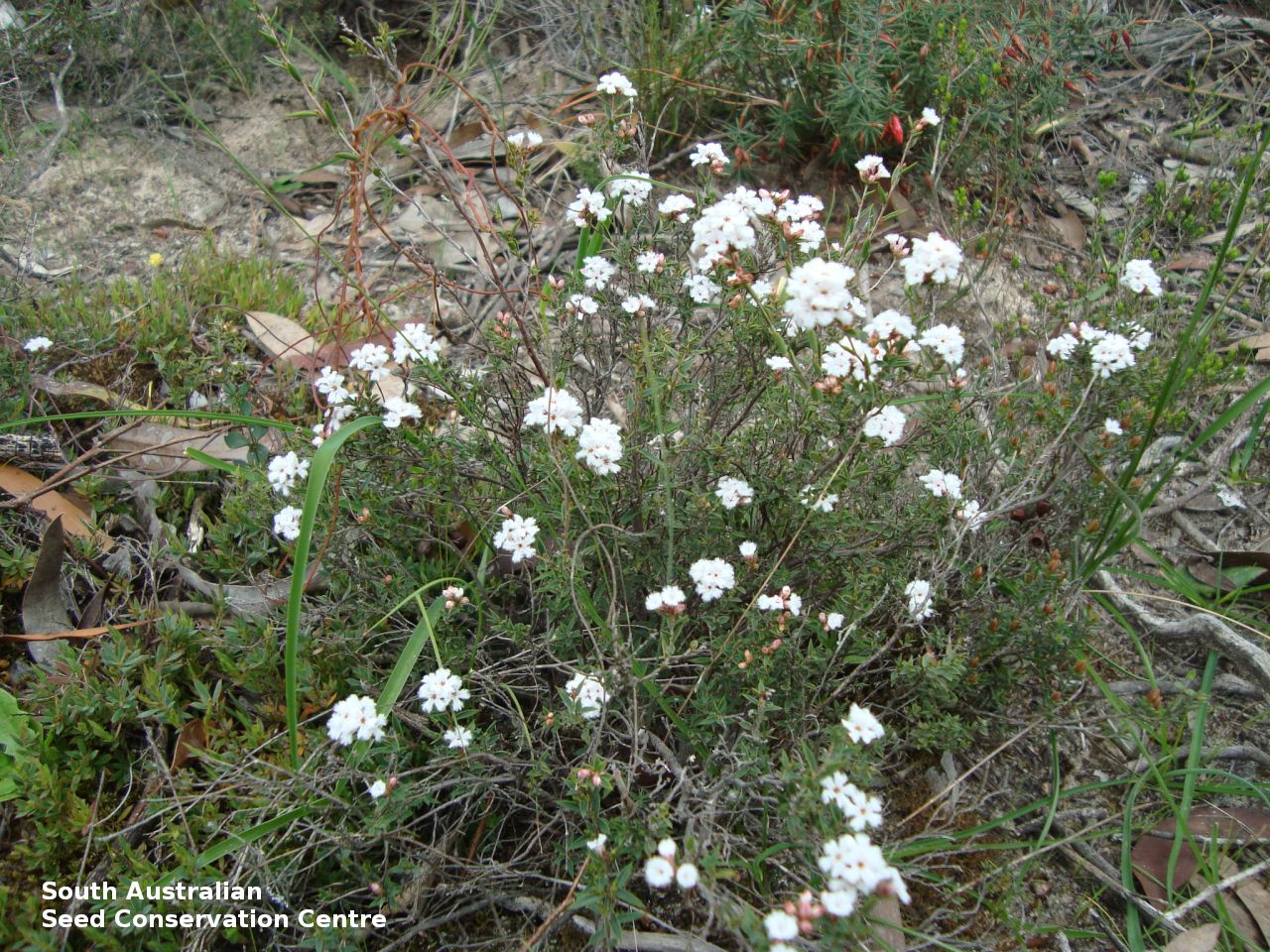
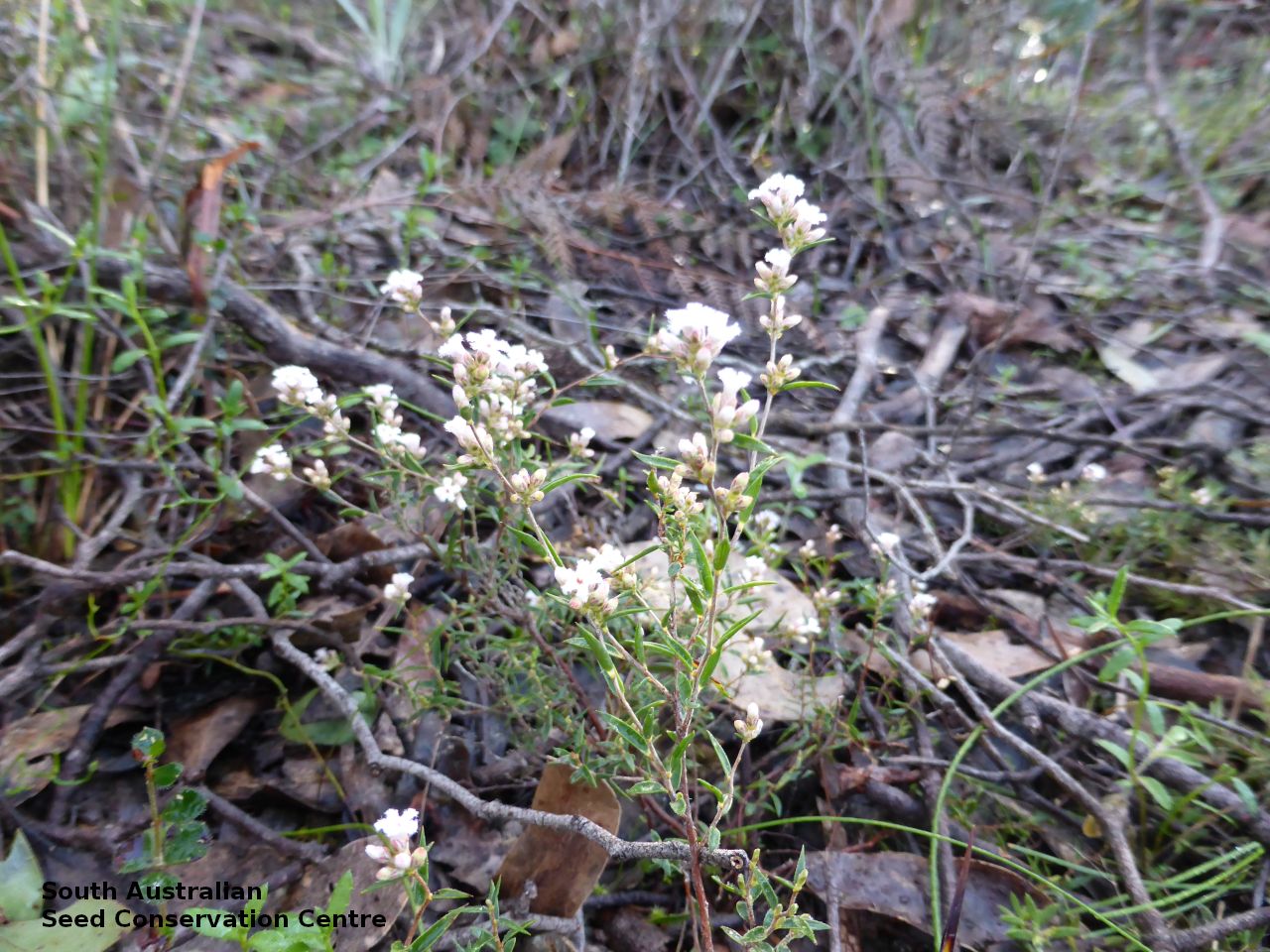
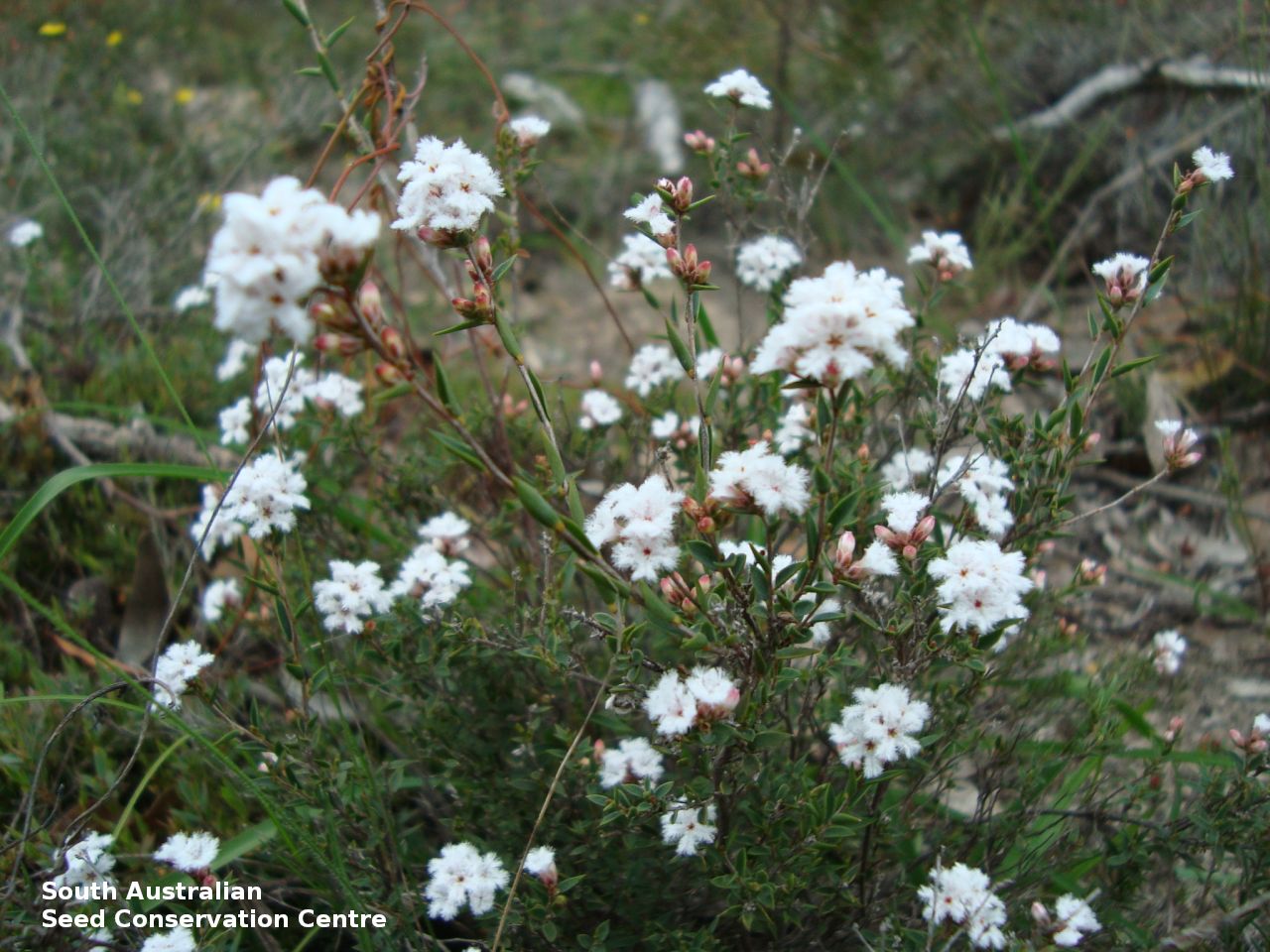
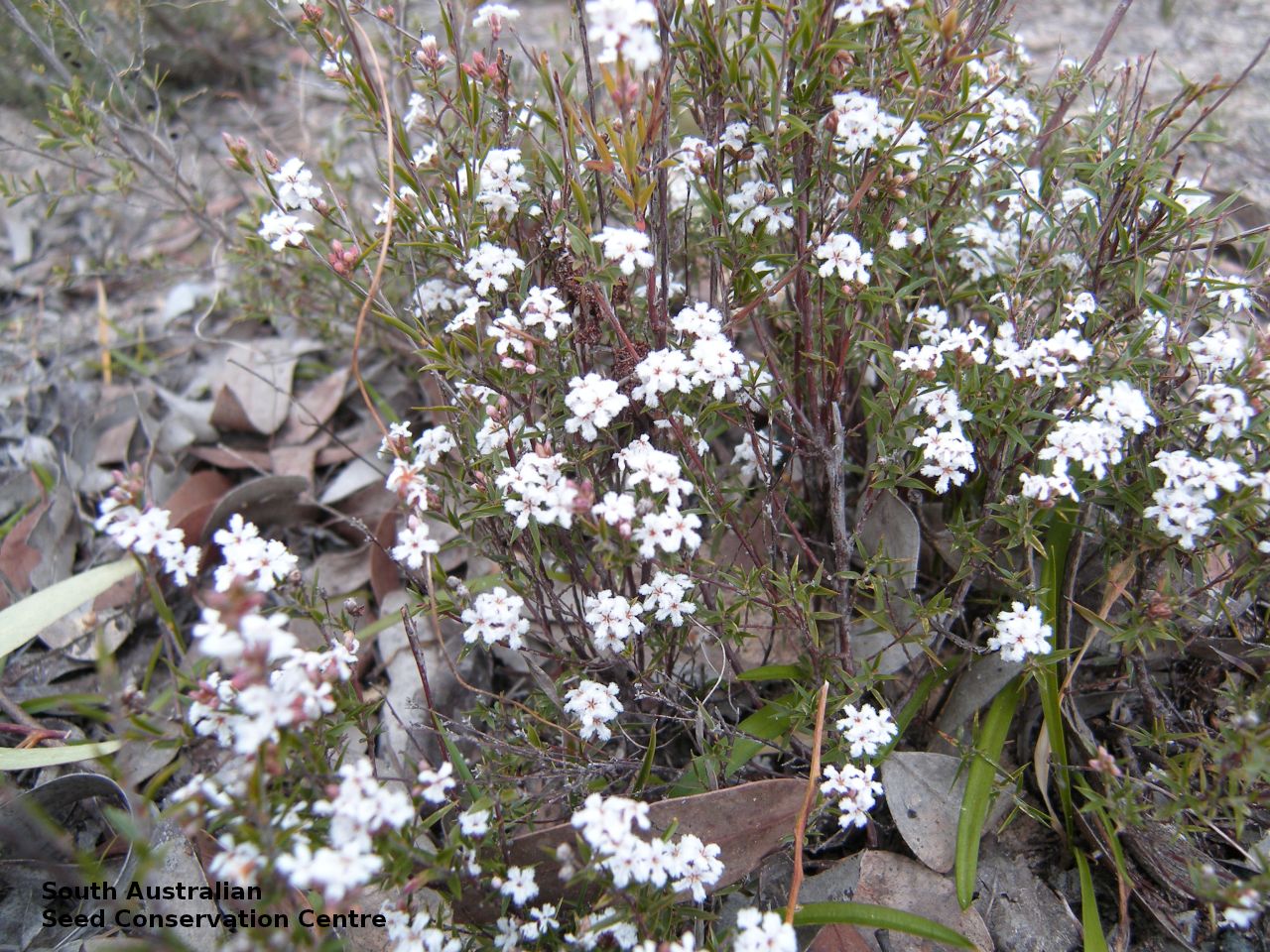
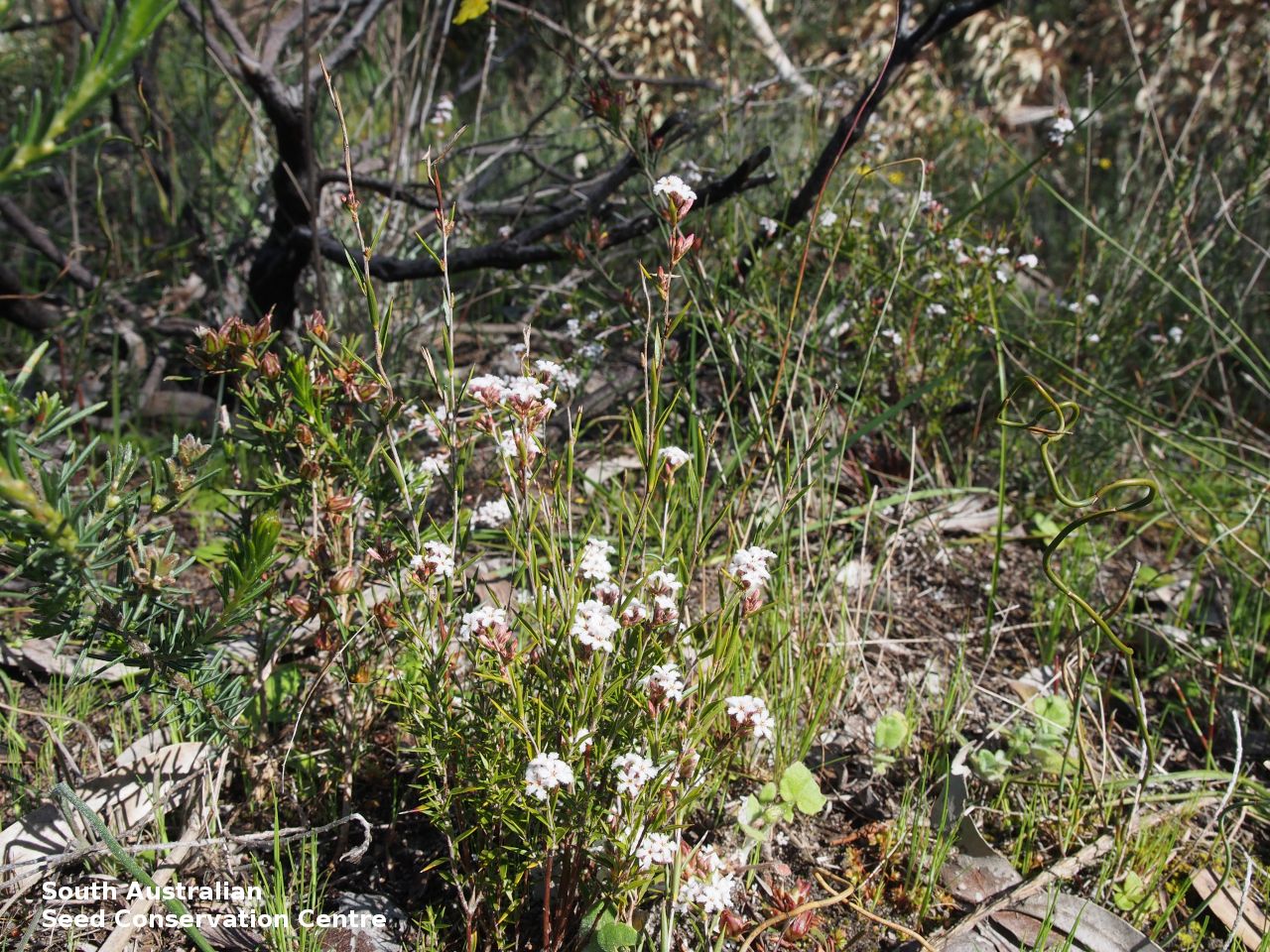
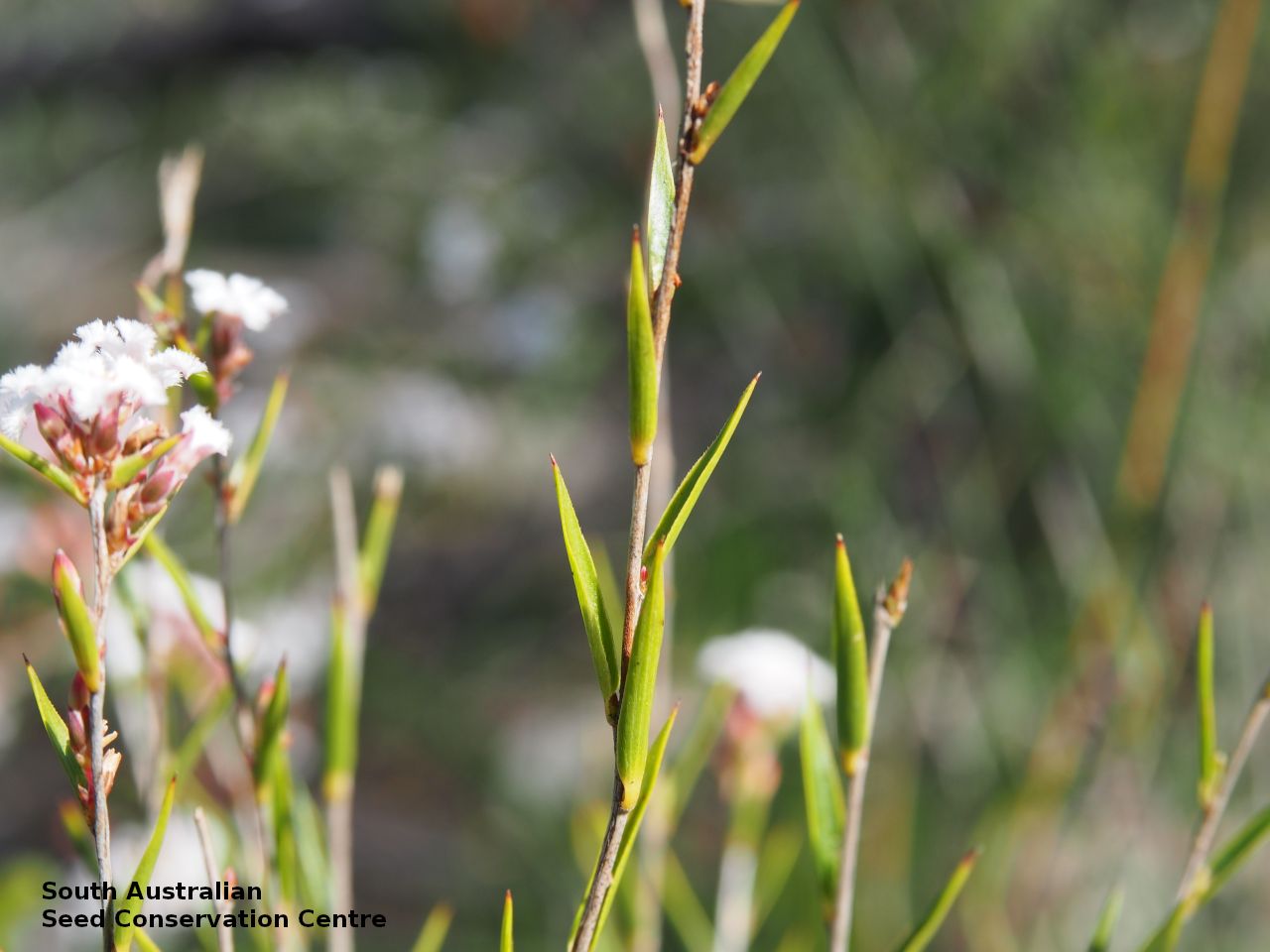
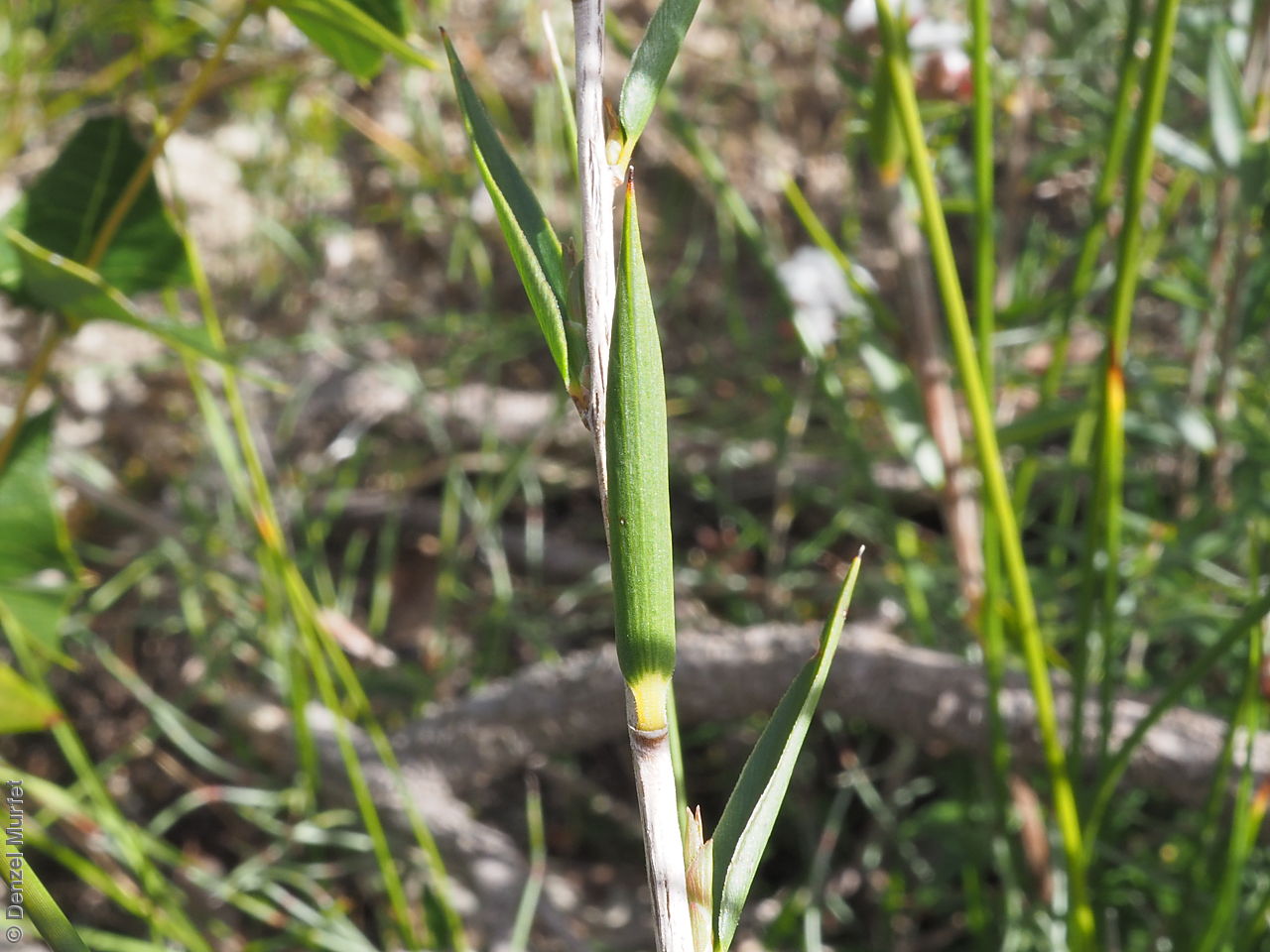
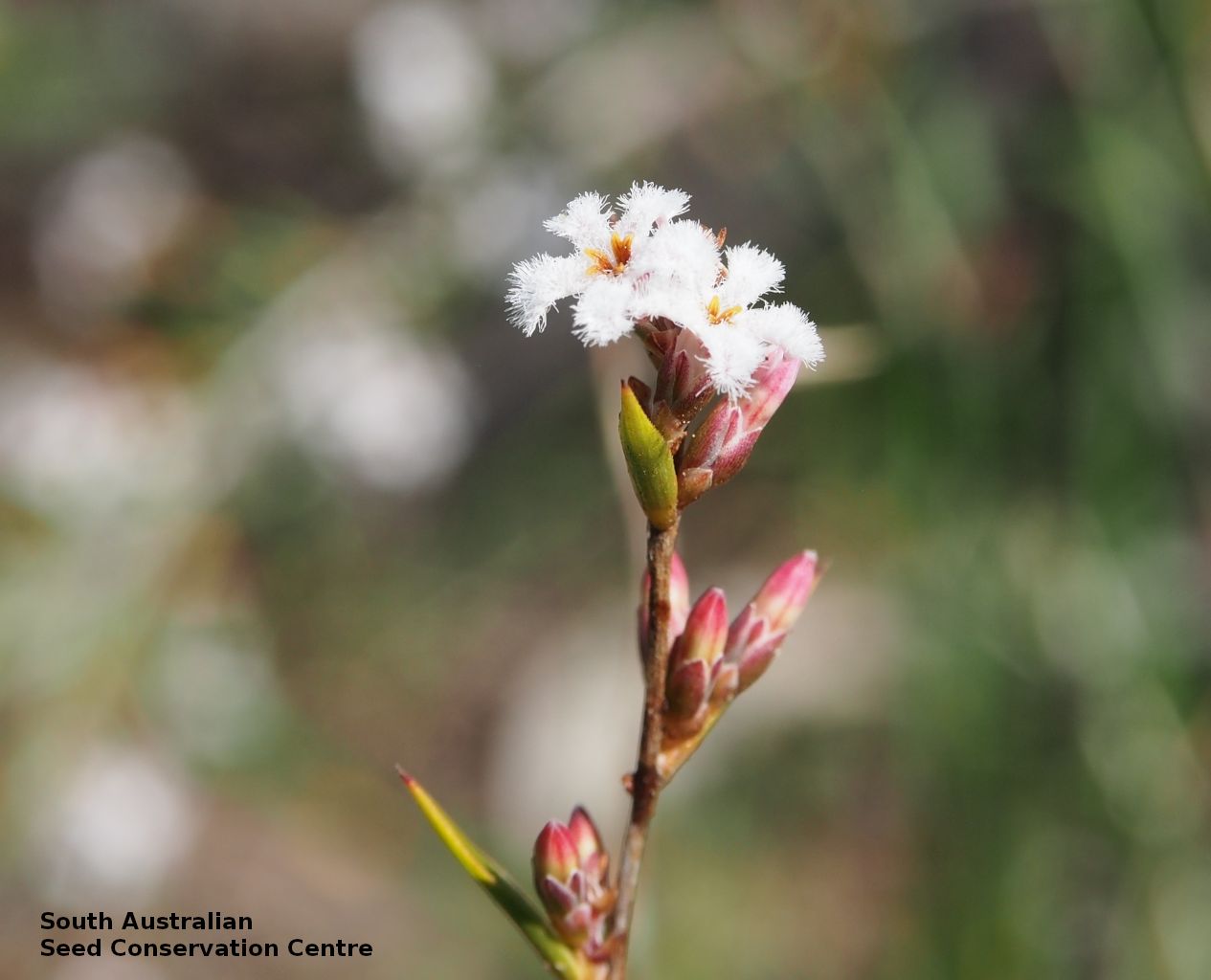
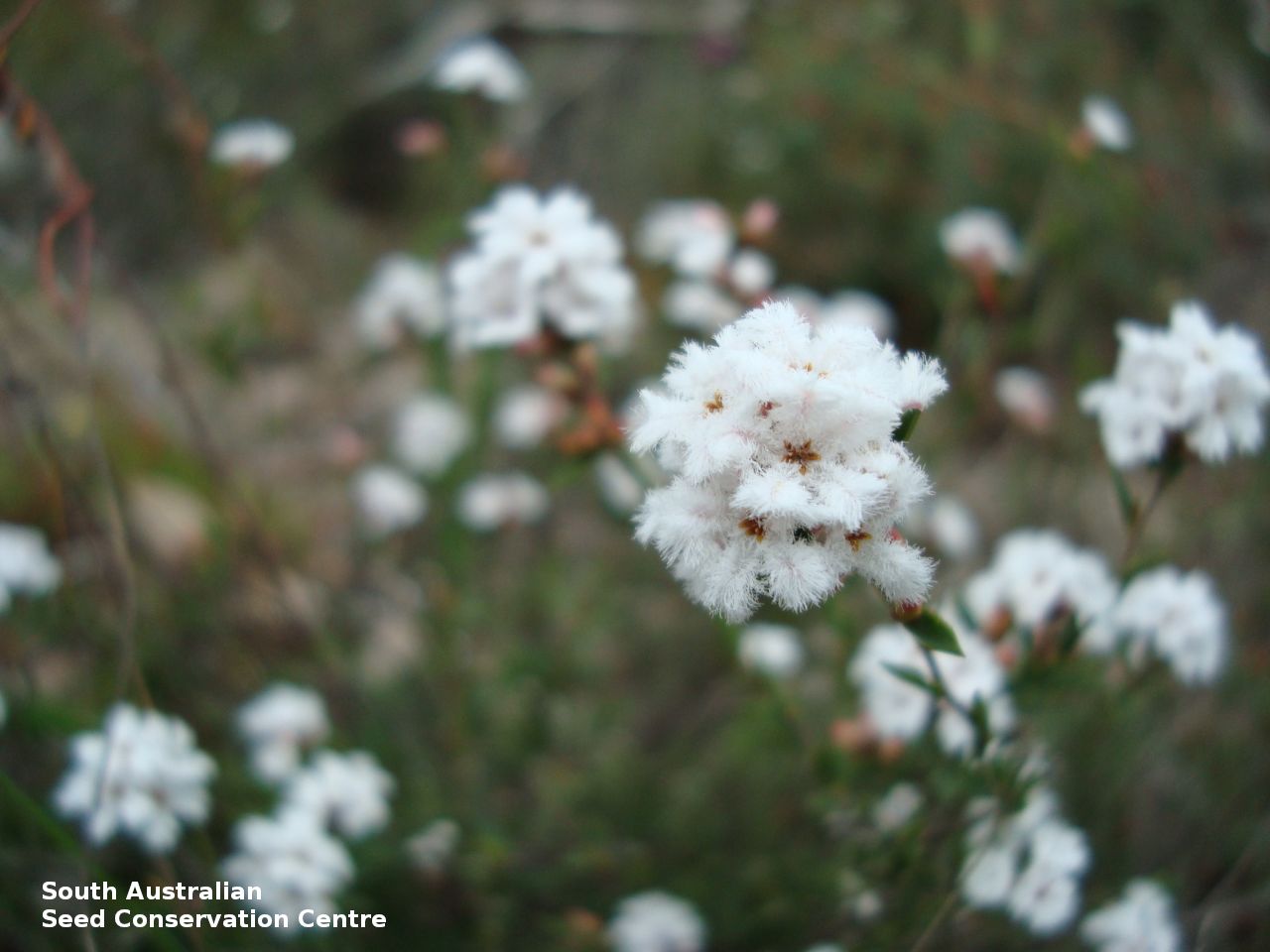
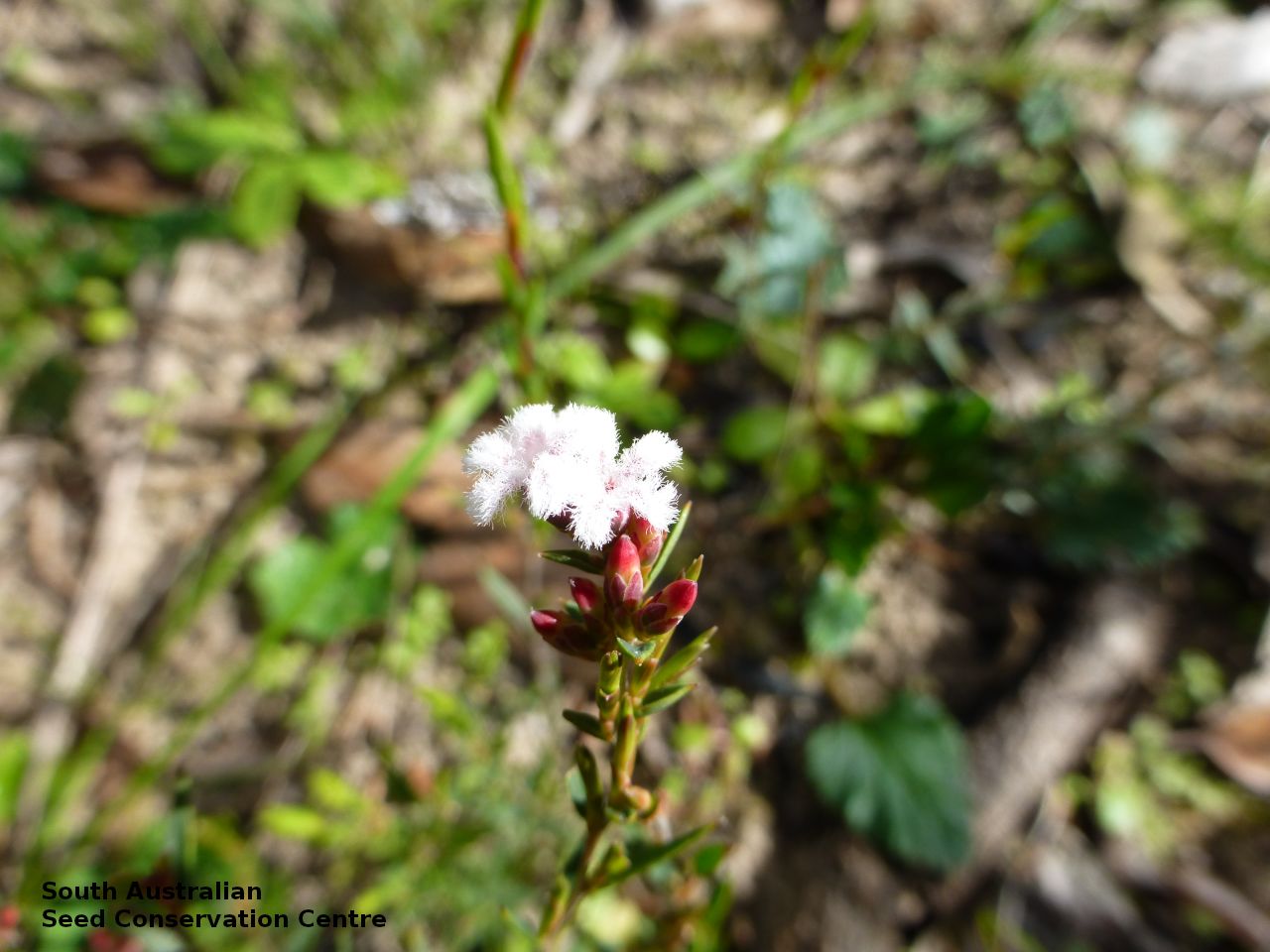
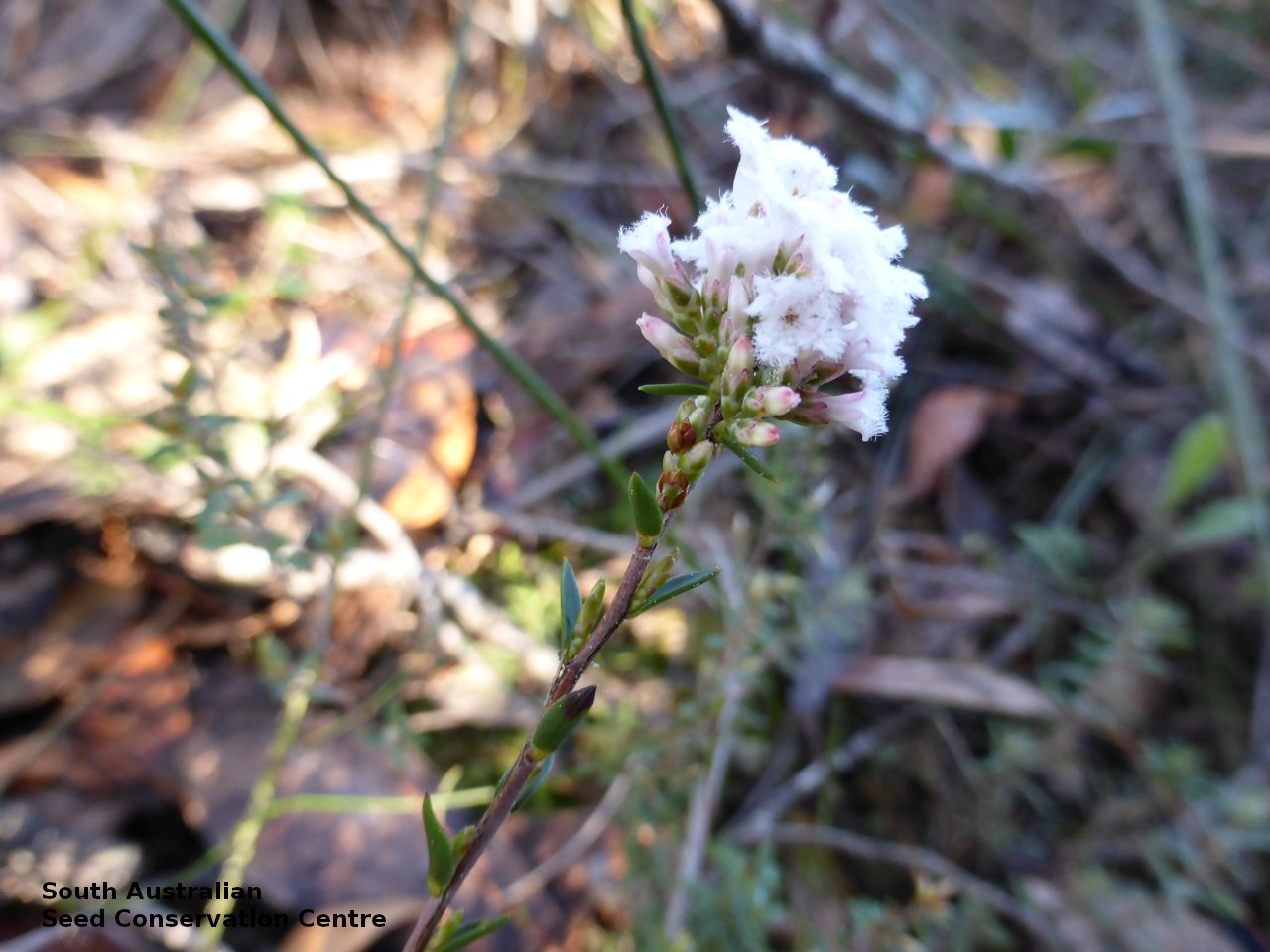
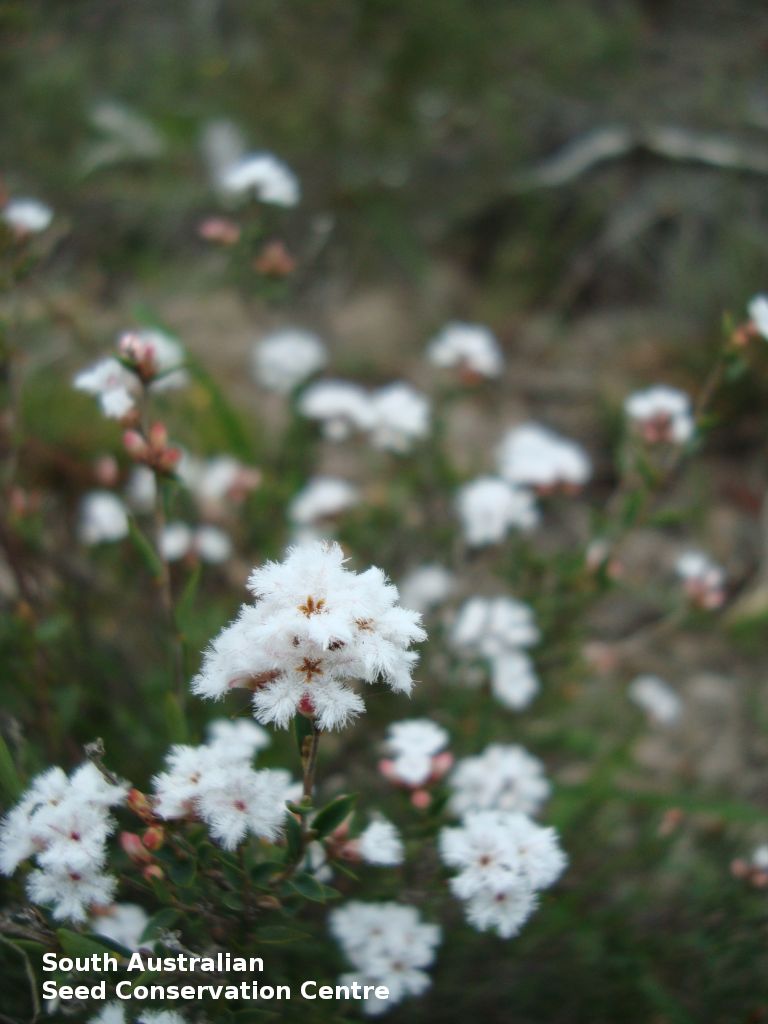
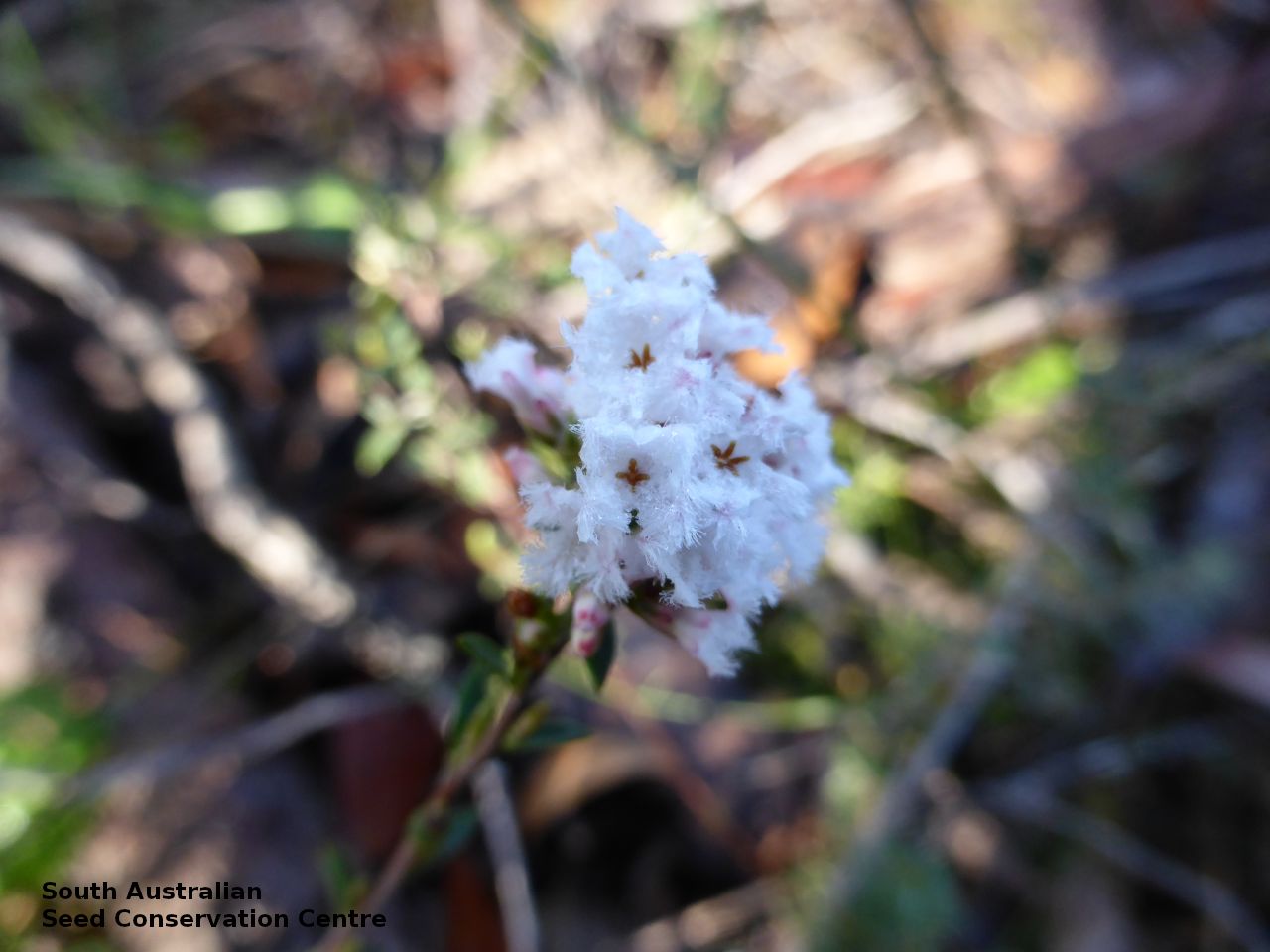
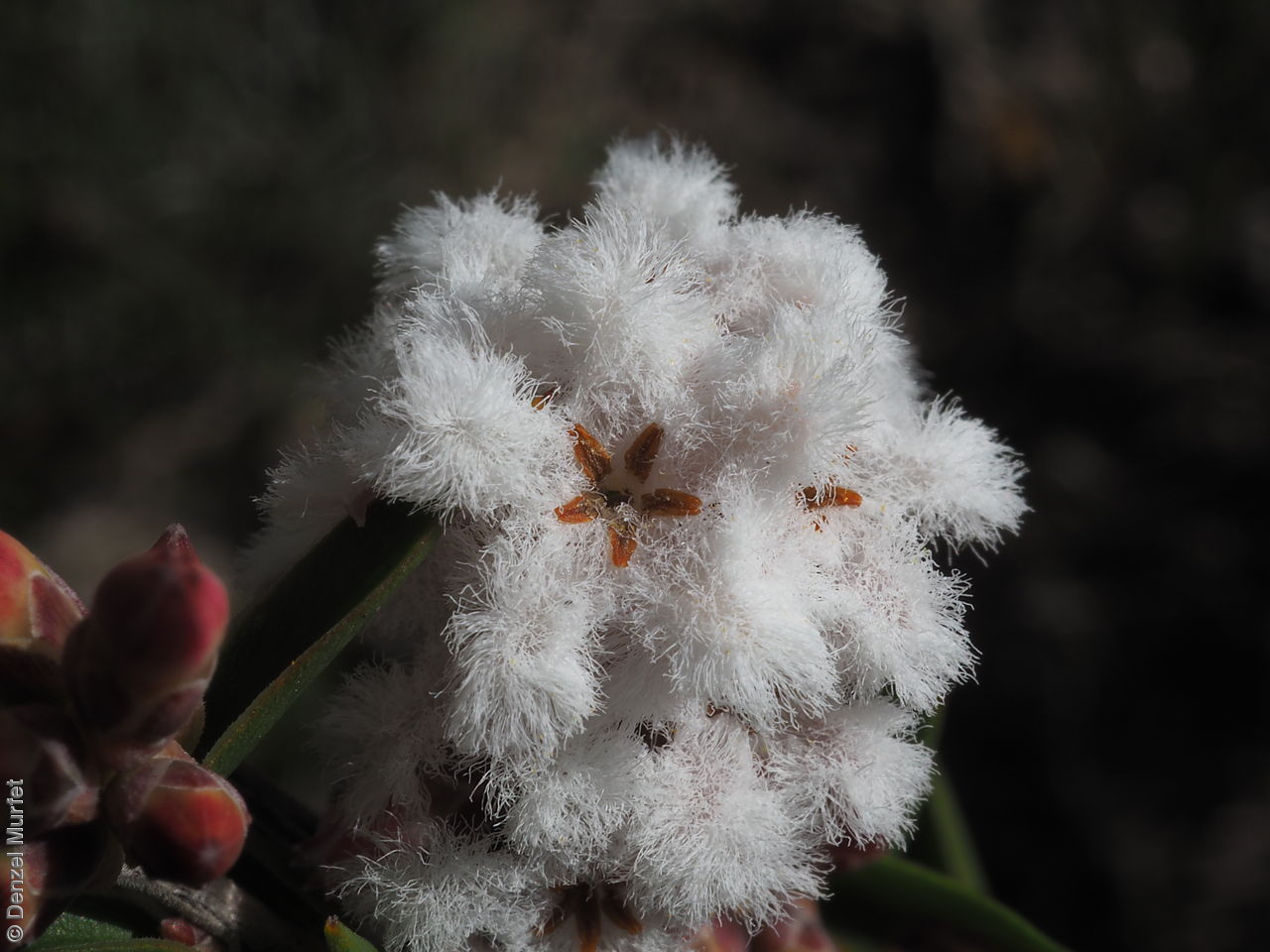
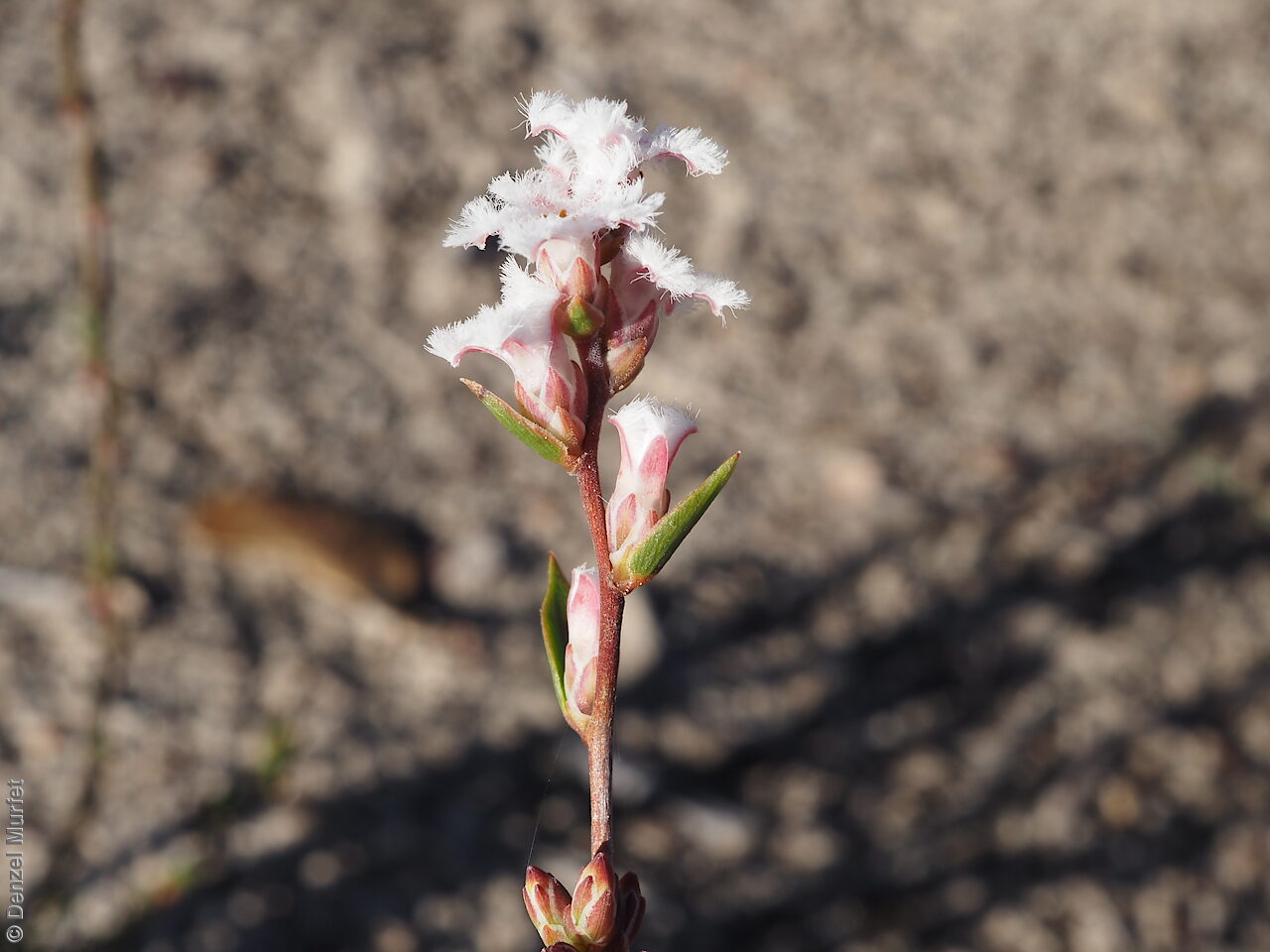
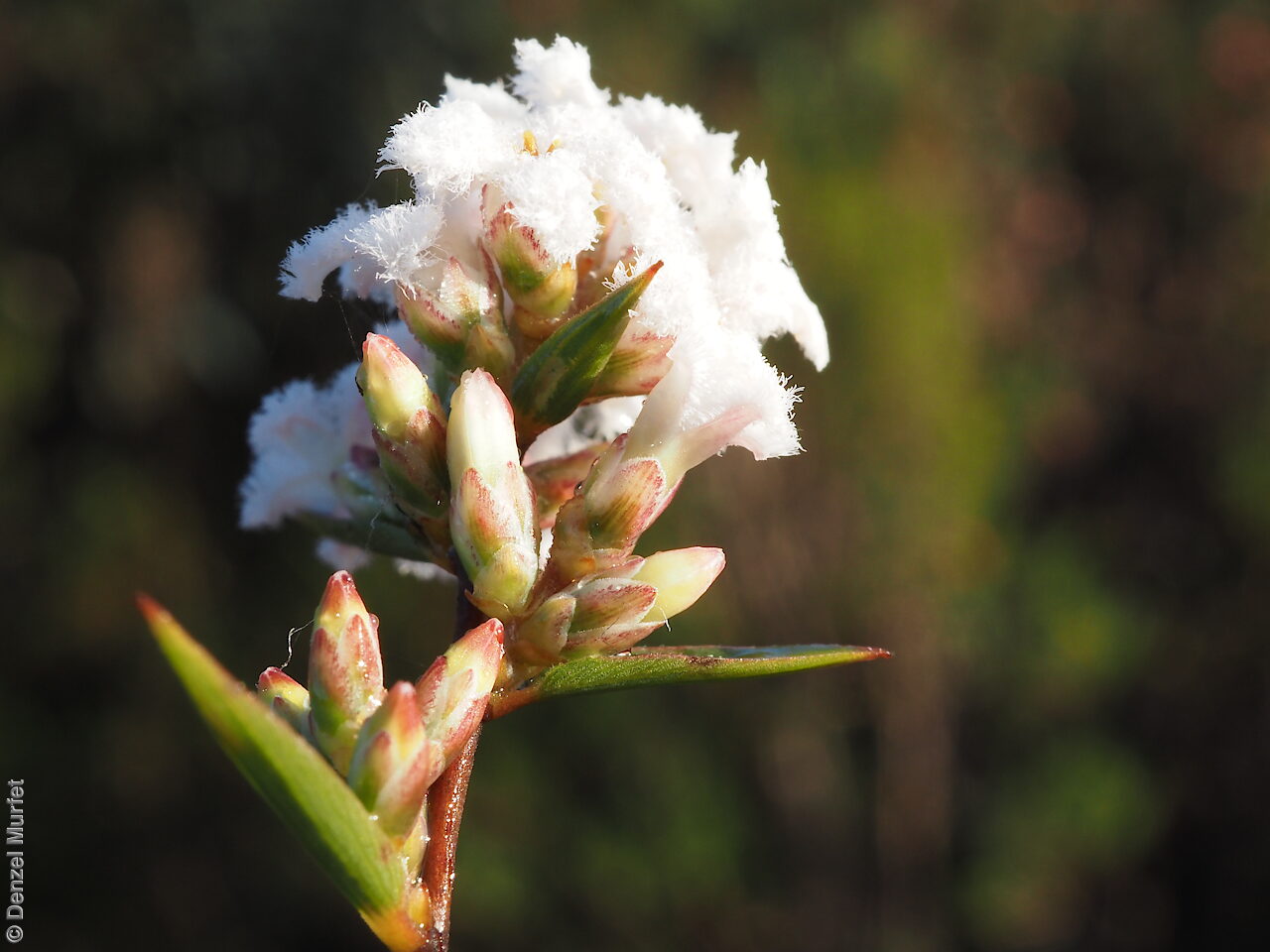

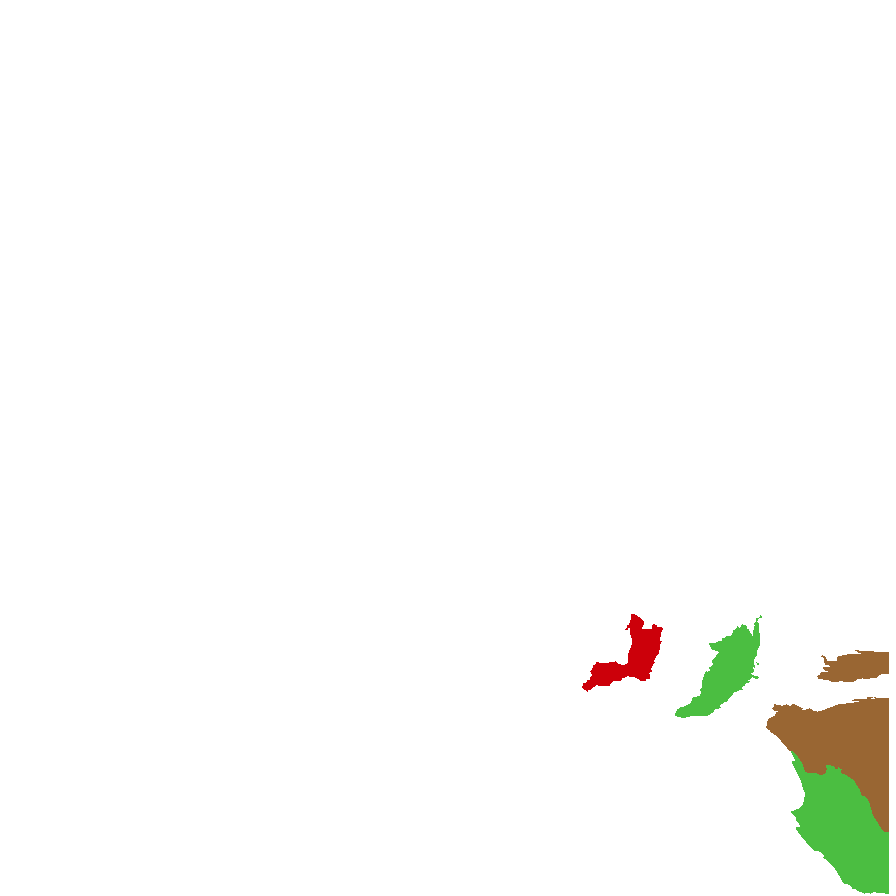
Botanical art
Prior names
Styphelia virgata
Etymology
Leucopogon, from the Greek 'leukoni', meaning white and 'pogon', meaning beard, alluding to the white-bearded corolla lobes. Virgatus, from the Latin 'virga' meaning twiggy, possibly referring to its twiggy habit.
Distribution and status
Found in the southern part of South Australia, growing in heathlands and woodlands on sandy soils & clay. Also found in New South Wales, Victoria and Tasmania. Native. Common in South Australia. Common in the other States.
Herbarium regions: Flinders Ranges, Eyre Peninsula, Northern Lofty, Murray, Yorke Peninsula, Southern Lofty, South Eastern, Green Adelaide
NRM regions: Adelaide and Mount Lofty Ranges, Eyre Peninsula, Northern and Yorke, South Australian Arid Lands, South Australian Murray-Darling Basin, South East
AVH map: SA distribution map (external link)
Plant description
Slender shrub to 50 cm high, with glabrous, rarely hairy branchlets and leaves. Leaves erect, lanceolate to narrowly lanceolate 25 mm long and 5 mm wide; concave, tapering gradually into a point with a pungent apex. Inflorescence in terminal or upper axillary spikes to 10 mm long, with 3-4 white (pink in bud) tubular, densely-bearded flowers. This variety differs from the other variety found in South Australia, Leucopogon virgatus var. brevifolius which has branches and leaves commonly appearing greyish, from a short, dense, even layer of erect hairs; leaves ovate, sometimes slightly cordate at base; 2–7 mm long, acute but not pungent at apex. Flowering between June and October. Fruits are fleshy oblong fruit to 2.3 mm long and 1.6 mm wide; smooth. Seeds are soft, white longitudinal seed, within the woody endocarp. Seed embryo type is linear, underdeveloped.
Seed collection and propagation
Collect seeds between October and January. Collect fruits by hand when ripe. Check to see if locules are filled with seed. Place the berries in a bucket of water and leave to soak over night. Rub the flesh off by hand. Drain and wash again if required to remove all the fleshy parts. Then spread the wet seeds onto paper towels and leave to dry. Store the seeds with a desiccant such as dried silica beads or dry rice, in an air tight container in a cool and dry place. Seeds have morpho-physiological dormancy and will not germinate readily without treatment. Germination is enhanced by treating with fire cues, heat and smoke water, and gibberellic acid.